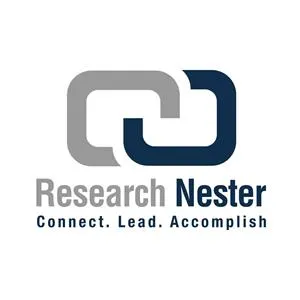Polyacrylate rubber market forecast at $86 by 2036
Pune, India – The industrial overview for the polyacrylate rubber industry is marked by growing demand from sectors requiring high-performance materials capable of withstanding extreme conditions. As per estimations by Research Nester Analytics, the market for polyacrylate rubber size is poised to reach USD 86 Billion by the end of 2036, growing at a CAGR of 10% during the forecast period. In the year 2023, the industry size of polyacrylate rubber was over USD 3 Billion. As industries continue to innovate and prioritize reliability, the demand for polyacrylate rubber is expected to rise, driving market growth and technological advancements.
In the packaging industry, the integrity of seals is paramount, especially for products that must be protected from environmental factors and contamination. Polyacrylate rubber excels in providing robust, durable seals that resist oils, chemicals, and extreme temperatures. This makes polyacrylate ideal for food and beverage packaging, pharmaceuticals, and industrial goods.
With the rise of e-commerce and global supply chains, the demand for reliable packaging solutions has surged. In 2019, the global e-commerce sector utilized about 2.1 billion pounds of plastic packaging. Plastic packaging used in e-commerce is expected to increase further in the upcoming years, reaching 4.5 billion pounds by 2025. Products often endure long shipping times and varying storage conditions, making the resilience of polyacrylate crucial. By ensuring that seals remain intact and effective, polyacrylate rubber contributes significantly to product safety and shelf life, thus driving its demand in the packaging sector.
As automotive technology advances, particularly with the push towards electric vehicles(EVs), the demand for high-performance, long-lasting materials is growing. Sales of electric vehicles increased by 3.5 million in 2023 compared to 2022, a 35% annual rise. Electric vehicles present new challenges, such as managing different types of thermal loads and fluid exposures. Polyacrylate rubber’s ability to meet these challenges is driving its adoption, supporting the evolution of automotive technologies, and boosting the polyacrylate industry
The automotive industry is a significant consumer of polyacrylate rubber, leveraging its superior resistance to heat and oil. Polyacrylate is used in critical components like oil seals, gaskets, and hoss, which need to withstand the harsh conditions under the hood. These components are exposed to high temperatures and come into contact with various automotive fluids, necessitating materials that can endure without degrading.
In the realm of consumer goods, polyacrylate rubber is used in applications where products must be leak-proof, durable, and safe. From kitchen appliances to plumbing fixtures, polyacrylate rubber provides the sealing solutions that prevent leaks and withstand exposure to oils and chemicals. This ensures that products remain functional and safe over extended periods, enhancing their reliability and consumer trust.
Considering that over a third of customers (31%) believe that the quality of goods and services is more important than price, new research highlights the significance of quality for consumers. manufacturers are turning to high-performance materials to meet these expectations. Polyacrylate rubber’s role in improving product quality is becoming increasingly recognized, leading to greater adoption in the consumer goods industries. This trend is fueling growth in the polyacrylate market as more manufacturers seek out materials that can provide the durability and performance their customers expect.
The chemicals and materials industry involves environments where exposure to aggressive chemicals and high temperatures is common. Polyacrylate rubber’s excellent chemical resistance and durability make it ideal for seals, gaskets, and hoses in chemical processing equipment. By maintaining their integrity in harsh conditions, polyacrylate rubber components help ensure safe and efficient operations, reducing the risk of leaks and failures.
With the growth of the chemicals industry, driven by sectors such as pharmaceuticals, agriculture, and energy, the need for reliable, high-performance materials is increasing. A major contributor to the global economy is the chemical sector, which is a global market. Europe will export chemicals worth 758 billion euros in 2022, making it the dominant region in the world chemical trade. Asia-Pacific, with chemical exports of 673 billion euros, is not far behind. In the upcoming years, Asia—and China in particular—is anticipated to play a major role in driving the expansion of chemical consumption, as the country’s quick industrialization would raise demand for chemical products. Polyacrylate rubber’s ability to handle the tough demands of chemical processing makes it a valuable asset in this sector. As a result, the market for polyacrylate is growing, supported by the ongoing expansion and innovation within the chemicals and materials industry.
Report Link – https://www.researchnester.com/reports/polyacrylate-rubber-market/5601

